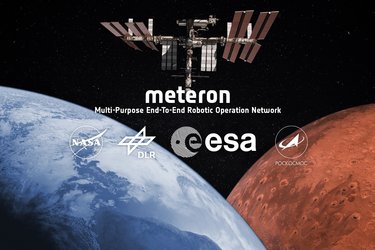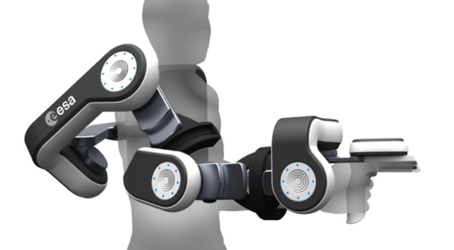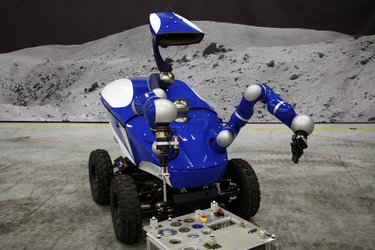Haptic Devices
SPOC Exoskeleton
Space Exoskeleton Controller (SPOC), is the fourth generation of exoskeleton master device developed by the laboratory. Similar to previous designs, the SPOC is a fully actuated force feedback haptic device, featuring eight actuated joints using a four-channel control architecture to perform bilateral teleoperations. Co-developed with an industrial consortium consisting of Denmark's Danish Aerospace Company and Belgium's Space Applications Services, the project aims to deliver a fully space qualified system in order to fly the device to the ISS and to be part of future human-robotic exploration missions.
Haptics-1 Joystick
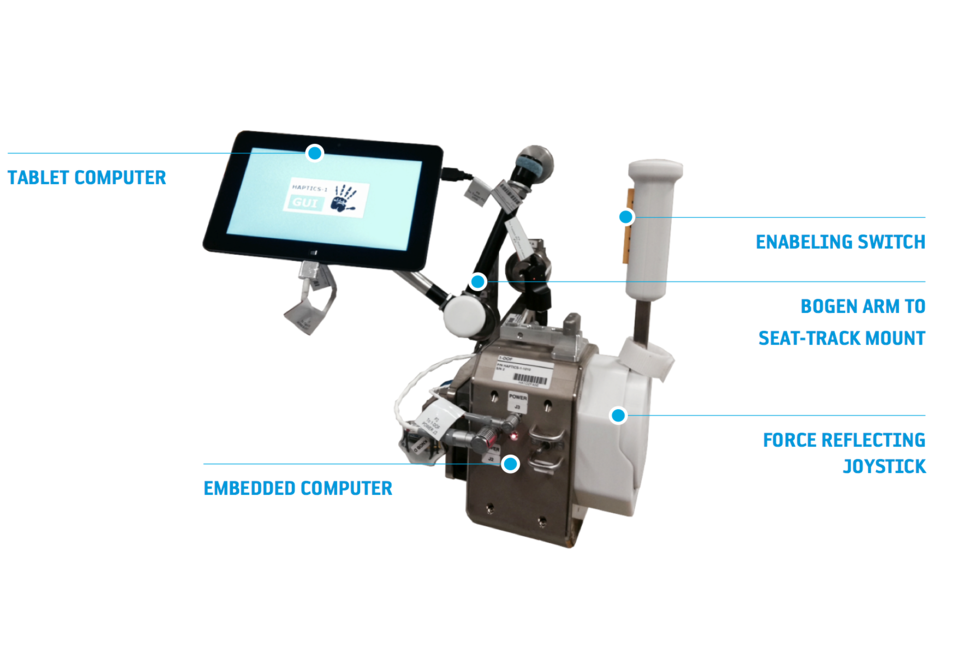
The Haptics-1 Joystick setup is a single degree of freedom high-resolution force control joystick for enhanced physiology research in micro-Gravity. The single degree of freedom joystick was sent to the International Space Station early in 2014, to investigate for the first time the effects of micro-Gravity on kinesthetic proprioception and human motor control capability. The joystick consists of a highly power-dense brushless DC actuator (a DLR RoboDrive ILM50x14), an EtherCAT motor controller, custom force/torque sensor and a low-power COTS flight computer. The components of the single degree of freedom setup are identical to those that will constitute the SPOC exoskeleton system, to be up-massed to the International Space Station in the near future.
X-ARM-II Exoskeleton
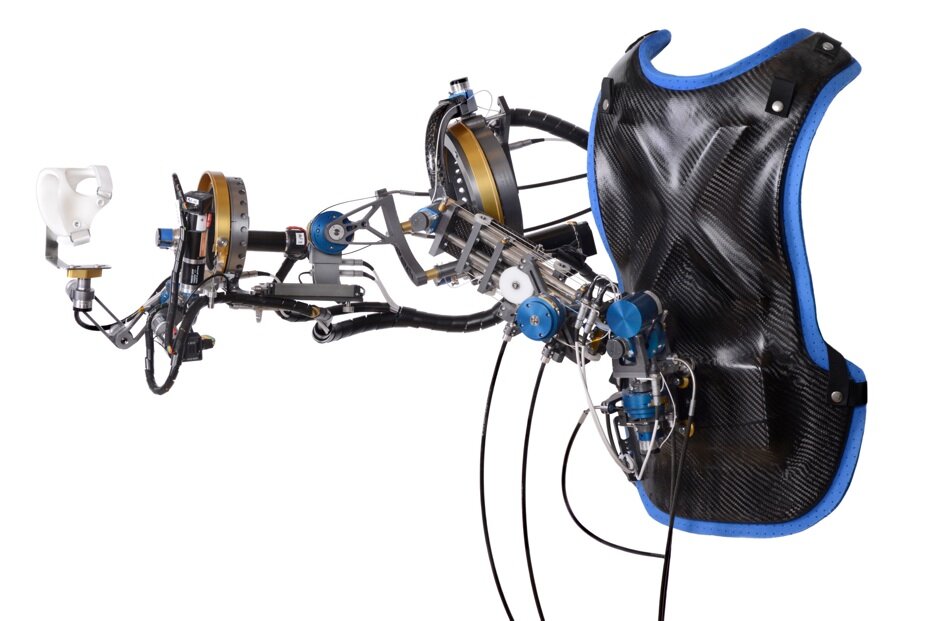
The X-Arm-2 Exoskeleton master device is an ergonomic, fully-actuated haptic master device for force reflection to the right arm of its operators. The haptic exoskeleton features 14 joints that are equipped with joint position sensors. Out of the 14 joints, 8 are additionally equipped with custom built high resolution torque sensors, motor-gear units and input-/output position sensors. The actuators feature innovative combinations of brushed DC motors with planetary gears and capstan reducers and for some joints include Bowden Cable systems. All actuator drive-trains, including those with Bowden Cables have been designed and customised for allowing highly transparent force-reflection. All joints of the exoskeleton feature a high dynamic range and allow for crisp force feedback through a 5 kHz joint-torque control rate and low sensor noise. The X-Arm-2 is used for our research on under-actuated haptic devices and is part of a bilateral control work cell consisting of the exoskeleton, it’s controller and a seven degrees of freedom KUKA lightweight manipulator (LWR).
See video here.



